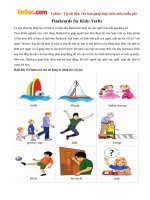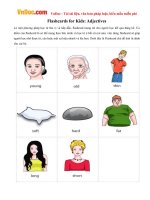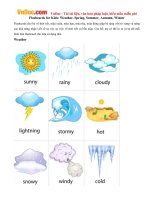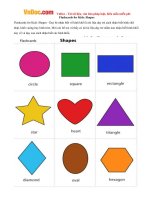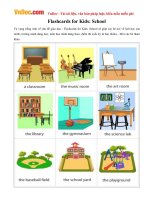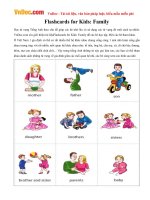67802 for kids
Bạn đang xem bản rút gọn của tài liệu. Xem và tải ngay bản đầy đủ của tài liệu tại đây (65.11 KB, 1 trang )
Compound Sentences with Coordinating Conjunctions (FANBOYS)
A compound sentence contains two separate subject and verb pairs. You can
combine two simple sentences together with a comma and a coordinating
conjunction to make one compound sentence. Here are some examples:
F – for
I drank some water, for I was thirsty.
She put on a sweater, for it was cold outside.
*for means the exact same thing as because. The only difference is that when you use
for to join two sentences together into one compound sentence, you need to use a
comma before it. When you use because to join to sentences, you don’t use a
comma before it.
A – and
He was tired, and he had a headache.
N – nor
She doesn’t drink milk, nor does she eat butter.
I can’t whistle, nor can I sing.
He didn’t study last night, nor did he read his book.
They were not wearing jackets, nor were they carrying umbrellas.
*nor means “also not”. Nor requires unusual grammar. The first sentence will contain
a negative verb. The second sentence will contain what looks like an interrogative
affirmative verb form. An auxiliary verb (do/does/did, is/am/are/was/were), modal verb
(can/could/will/would/may/might/must/should), or be main verb (is/am/are/was/were)
comes after nor and before the subject, and then the main verb comes after the subject.
B – but
Tom studied a lot, but he didn’t pass the test.
O – or
He can buy the book, or he can borrow it from the library.
Y – yet
Tom studied a lot, yet he didn’t pass the test.
*yet means the same thing as but.
S – so
Maria was thirsty, so she drank some water.
It was cold outside, so she put on a sweater.


